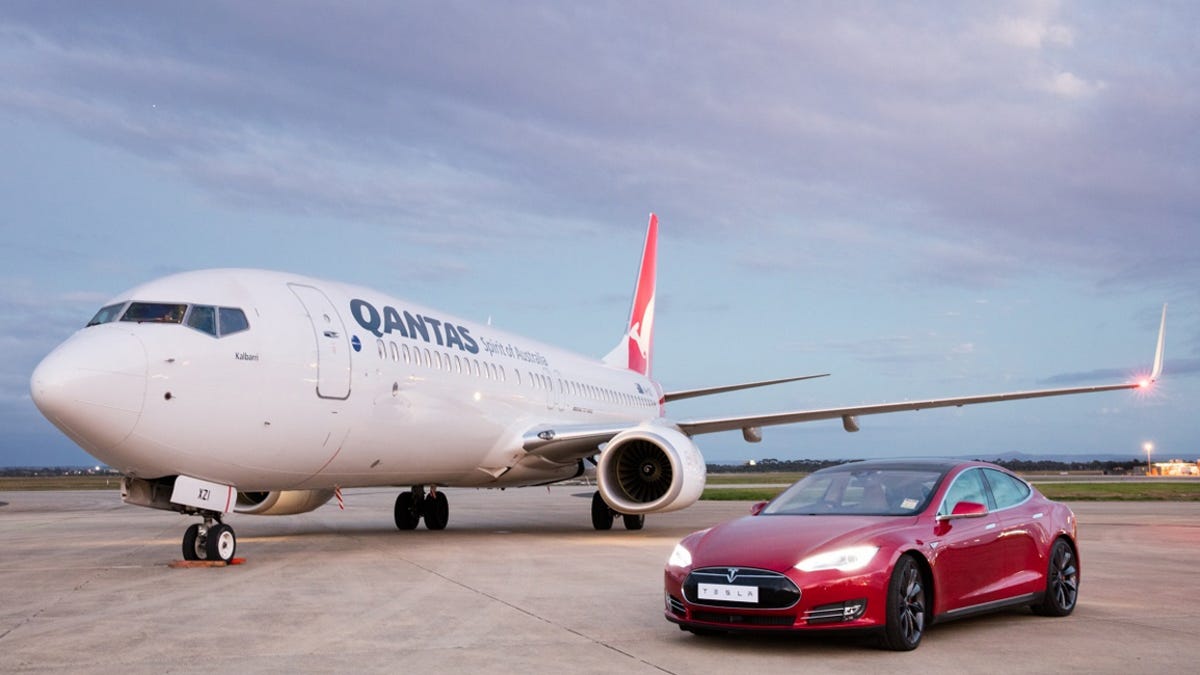Tesla vs. Boeing: Which wins the ultimate drag race?
One boasts 155 mph top speeds and Ludicrous Mode, the other seats 168 passengers and packs 52,000 pounds of thrust. Fasten your seatbelts and stow your tray table -- drag racing just got interesting.

The Tesla Model S went nose to bumper against a Boeing 737 jet.
It's like the Batman vs. Superman question for rev-heads and aviation geeks: Who would win in a race between Tesla and Boeing?
More specifically, what happens when you line up Tesla's Model S P90D electric car, complete with dual motors and hypercharged "Ludicrous Mode," against a Boeing 737-800 jet airplane, and give them a half mile of runway to duke it out?
The answer is a drag race that puts Thunder Road to shame. And we're still not technically sure who won.
The race played out Avalon Airport, just outside Melbourne, Australia, over the weekend as part of the launch of a new partnership between Tesla and Australia's national airline, Qantas. Just like air traffic control, we can see a PR stunt coming a mile off. But still, we can't complain if it means watching a 168-person passenger jet race down a half-mile (900-metre) stretch of runway next to an electric car that can go from 0 to 62 mph (100kph) in 3 seconds.
So how did the two vehicles stack up?
While the Boeing 737 has 52,000 pounds of thrust and a top speed of Mach. 82, Tesla packs a 90-kilowatt battery and a top speed of 155 mph (250 kph) into its top-of-the-line Model S, the P90D. And with 967 Nm of torque, the Tesla was certainly quicker off the mark.
In the true spirit of commercial brand collaboration, Qantas wouldn't be drawn on the true winner, only saying that the Model S came first on the runway before being beaten as the jet took off.
It might have been a little bit ambitious to think the Tesla could win in a race to the skies -- after all, this isn't "Grease." But still, we'll call it: Tesla by a nose.
And you don't need 20,000 hours of flight experience to drive one.

